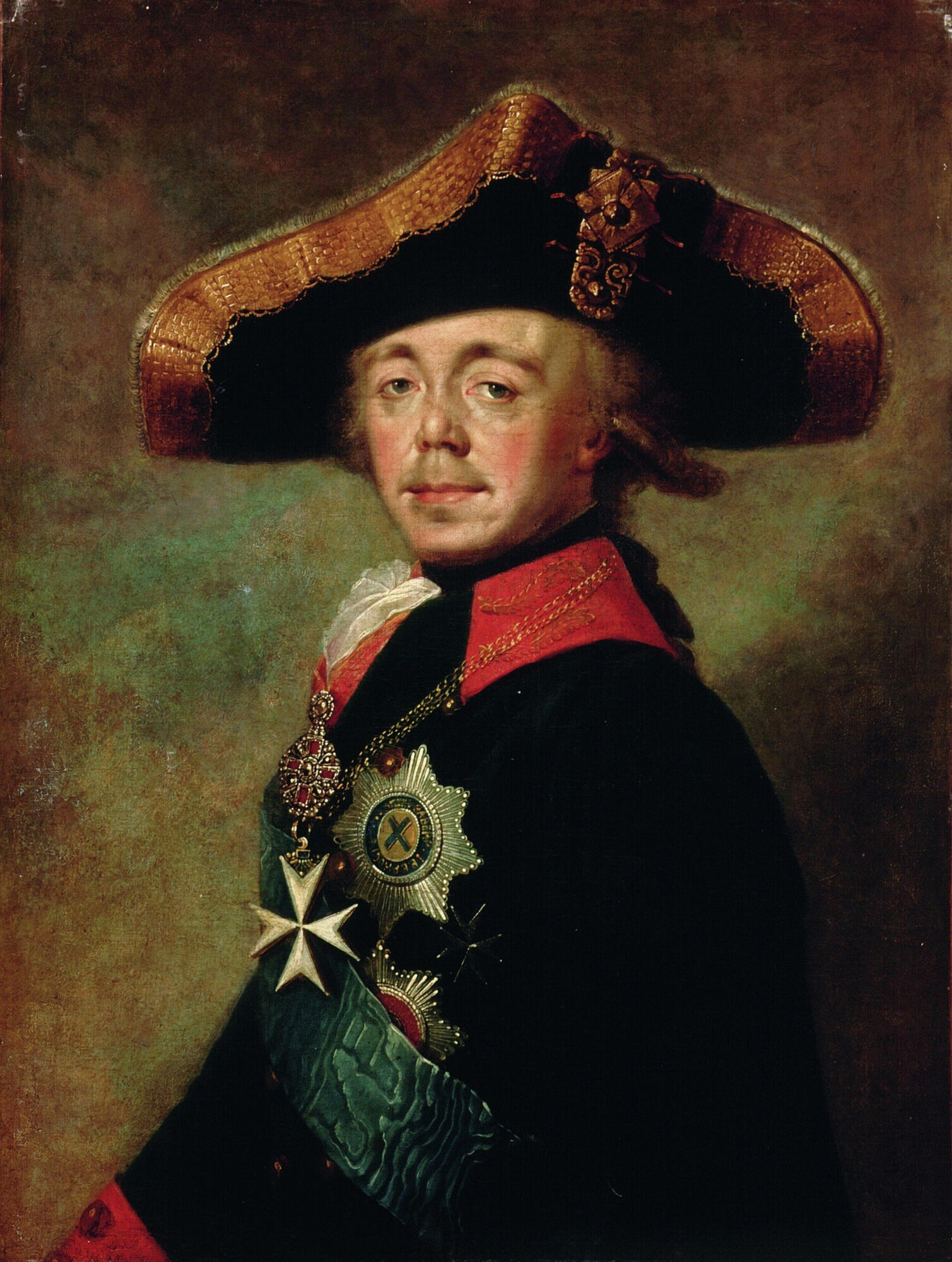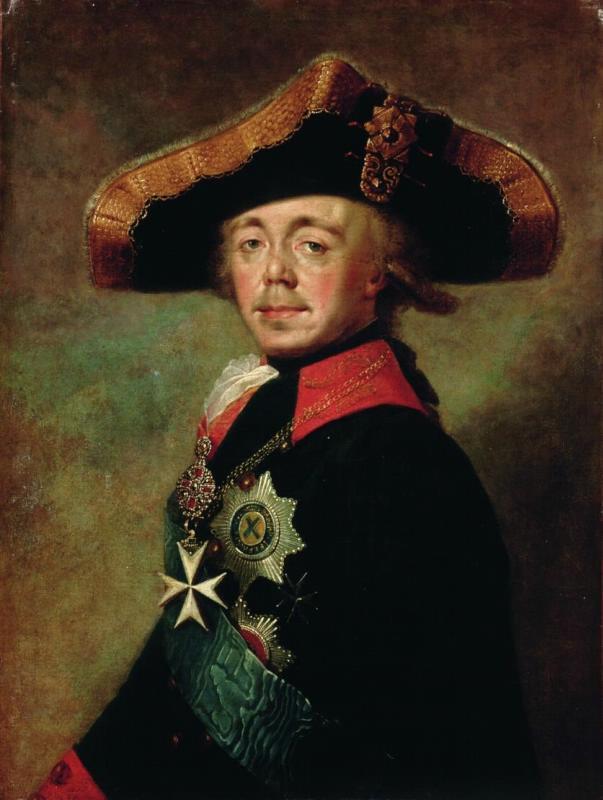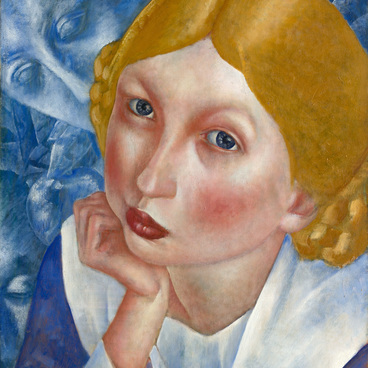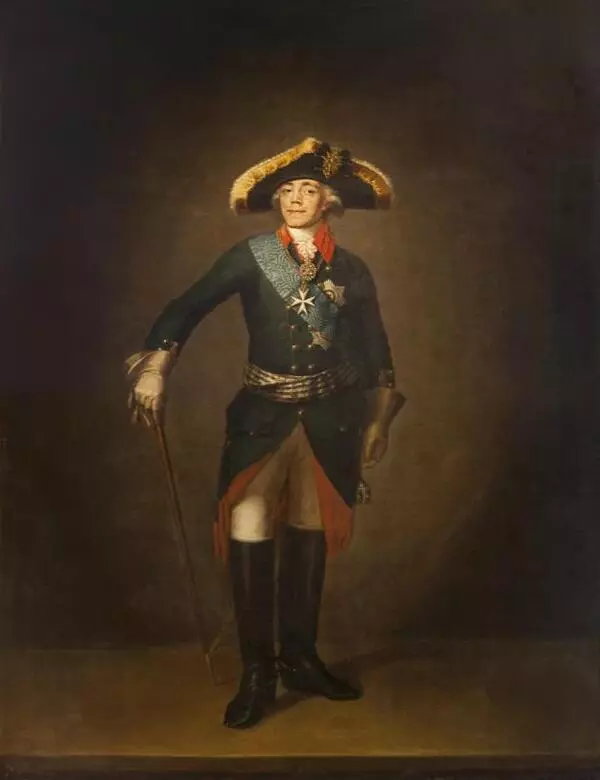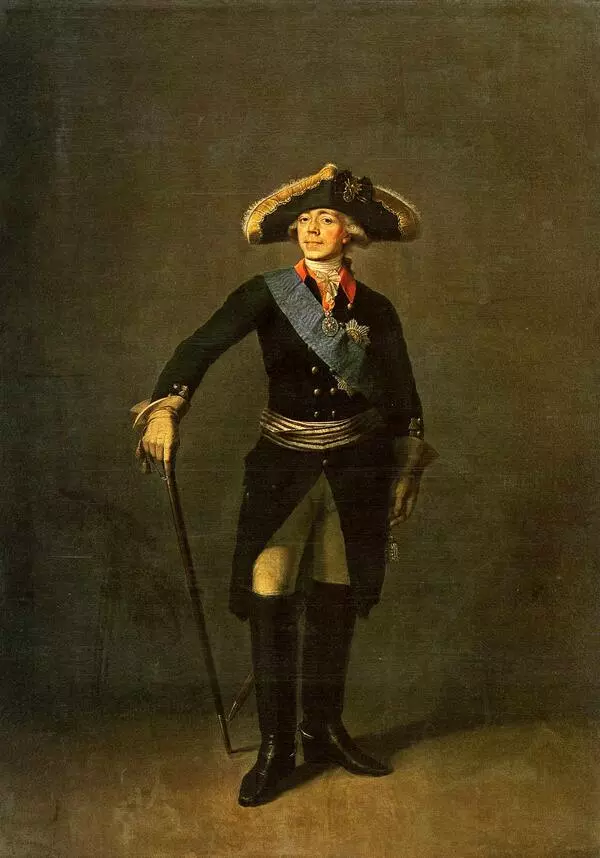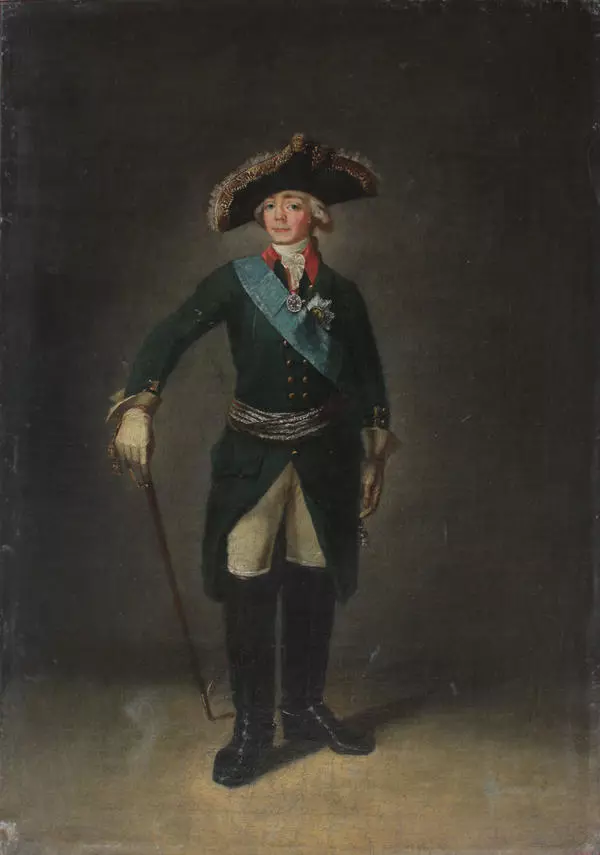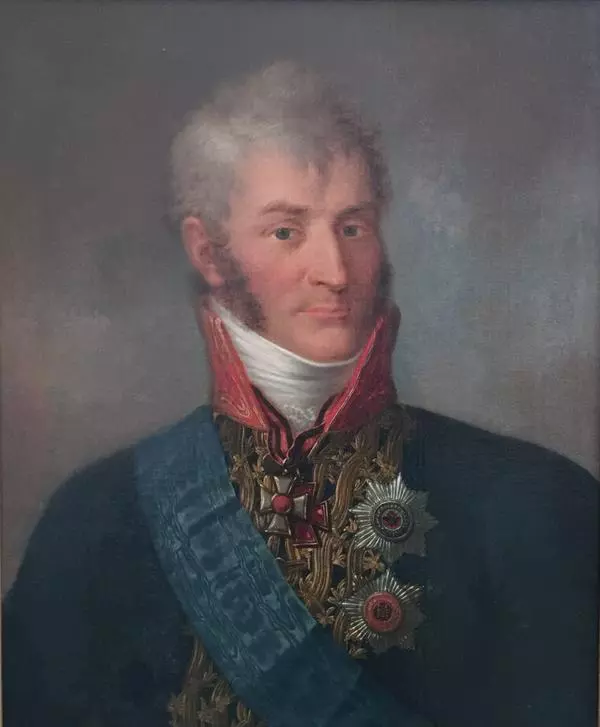The presented portrait by Russian artist Stepan Shchukin (1762-1828) depicts the Emperor of Russia Paul I (1754-1801) already in adulthood. According to historians, the reign of Paul I was short and was generally assessed negatively. After the assassination of the emperor as a result of a conspiracy, his eldest son Alexander I (1777–1825) took over the reins.
The background of the painting is made in an iridescent dark range. The color palette goes from deep brown to light olive, which smoothly flows into ocher shades. The viewer has the feeling that behind the emperor, the background swirls gloomily and trembles, as if predicting the terrible death of the emperor soon.
The figure is depicted traditionally for a half-dress portrait in three quarters of a turn, and the face is highlighted in light tones. On the head of a cocked hat, the emperor is dressed in a military suit, which is a reference to his interest in military affairs and an attempt to introduce the Prussian model into the military system of the Russian army. At the same time, the following attributes are presented - the blue ribbon of the Order of St. Andrew the First-Called, the Order of St. Anne, named after the daughter of Peter I. In honor of the election of Paul I as Grand Master of the Order of Malta, he is depicted with the Maltese cross on his chest.
The portrait created by the artist gained great popularity. For example, almost the exact same painting can be seen in the collection of the State Russian Museum. The presented exhibit was not initially identified, however, thanks to an examination carried out by the efforts of the State Tretyakov Gallery, dating was established and conclusions were drawn about the belonging of the work to Stepan Shchukin.
Shchukin was educated at the Academy of Arts. The young talent was taught by one of the ‘titans’ of the ceremonial portrait, Dmitry Levitsky (1735-1822). Pretty soon the young artist himself gained recognition in this genre, earning a gold medal. He traveled to France, where he got the opportunity to continue his studies and work fruitfully. Thanks to the portrait of Paul I, he was awarded the title of academician and received special favor from the emperor. The painter was distinguished by a high skill in conveying similarities, a choice of interesting colors, and skill of painting.
The background of the painting is made in an iridescent dark range. The color palette goes from deep brown to light olive, which smoothly flows into ocher shades. The viewer has the feeling that behind the emperor, the background swirls gloomily and trembles, as if predicting the terrible death of the emperor soon.
The figure is depicted traditionally for a half-dress portrait in three quarters of a turn, and the face is highlighted in light tones. On the head of a cocked hat, the emperor is dressed in a military suit, which is a reference to his interest in military affairs and an attempt to introduce the Prussian model into the military system of the Russian army. At the same time, the following attributes are presented - the blue ribbon of the Order of St. Andrew the First-Called, the Order of St. Anne, named after the daughter of Peter I. In honor of the election of Paul I as Grand Master of the Order of Malta, he is depicted with the Maltese cross on his chest.
The portrait created by the artist gained great popularity. For example, almost the exact same painting can be seen in the collection of the State Russian Museum. The presented exhibit was not initially identified, however, thanks to an examination carried out by the efforts of the State Tretyakov Gallery, dating was established and conclusions were drawn about the belonging of the work to Stepan Shchukin.
Shchukin was educated at the Academy of Arts. The young talent was taught by one of the ‘titans’ of the ceremonial portrait, Dmitry Levitsky (1735-1822). Pretty soon the young artist himself gained recognition in this genre, earning a gold medal. He traveled to France, where he got the opportunity to continue his studies and work fruitfully. Thanks to the portrait of Paul I, he was awarded the title of academician and received special favor from the emperor. The painter was distinguished by a high skill in conveying similarities, a choice of interesting colors, and skill of painting.
